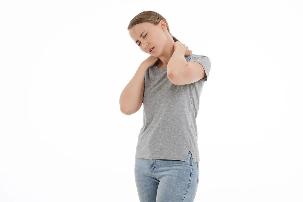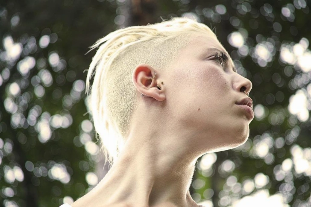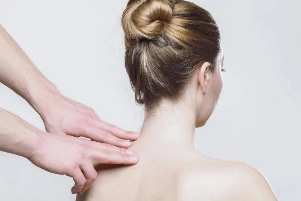
The main causes, symptoms and prevention of cervical osteochondrosis. Reward: prevent gymnastics.
Cervical osteochondrosis is a degenerative dystrophic disease of cervical intervertebral disc. With age and lack of treatment and prevention, diseases tend to develop. Osteochondrosis is one of the most common diseases of the spine.
If there is pain in this department, you should seek medical attention as soon as possible, because progressive osteochondrosis can cause serious health problems, including vision problems, persistent migraines, and even death.
Osteochondrosis is not necessarily an age-related change, it usually affects young people.
Eight main causes of osteochondrosis
- Heredity,
- Injured
- Excessive physical exercise,
- Age-related changes
- Metabolic diseases
- Sedentary (loss of motivation),
- Incorrect body posture during sleep
- Stress (psychotherapy).
If one or more symptoms occur, you should consult a doctor for treatment or prevention.
Causes of cervical chondropathy
There are many causes of cervical osteochondrosis. It is not only age-related changes that can cause disease. The disease also affects young people who like to sit for a long time.
Inactivity is the most common cause of osteochondrosis. Lack of moderate exercise can cause muscle weakness and poor blood circulation. It may further squeeze the nerve and develop intervertebral hernia.
Factors leading to the development of cervical osteochondrosis
- The structure and position of the brain stem are violated relative to the deformity of the spine and the first cervical vertebra.
- Acquired deformities-kyphosis, lordosis, scoliosis and combinations thereof.
- People over 60 years old. At this age, the intervertebral disc will undergo age-related natural changes. Overgrowth of bones.
- Poor posture due to bending or prolonged discomfort.
- Cervical spine injury.
- Incorrect muscle load.
- Obesity.
If the load on the muscle is asymmetric, it may cause deformation. This change is due to habit: lifting weights with one hand, carrying a bag on the shoulder, and using a pillow that is too soft when sleeping.
Degree of osteochondrosis
Modern science knows that the development of cervical osteochondrosis is mainly divided into three stages. They are different from each other in the degree of vertebral damage and treatment methods.
Primary osteochondrosis
It begins with the rupture of the intervertebral disc capsule and the appearance of microcracks in the annulus fibrosus. This type is characterized by the degeneration and transformation of cervical joints and changes in tissue structure.
Primary signs of osteochondrosis:
Worried about joint pain in the neck and shoulder straps, vasoconstriction and impaired blood circulation;
- Pain in the neck and sharp head turning, indicating that the nerve endings are compressed;
- Persistent cervical discomfort, temples, nape and headache;
- Blurred vision, flies and veils in the eyes.
Secondary osteochondrosis
is characterized by reduced distance between intervertebral discs. Any load will cause some pain and make it difficult to turn or tilt the head.
Three times of osteochondrosis
Noted that it is a chronic disease of the musculoskeletal function of the spine. The structure of the spine has changed significantly.
Lack of treatment at this stage may lead to stroke. Death is possible.
Three signs of osteochondrosis:
- Partial or complete paralysis of the neck and shoulder joints;
- Lower limb sensitivity;
- Disc herniation becomes visible visually;
- Due to circulatory system diseases and lack of adequate oxygen supply, certain parts of the cerebral cortex died.
In the third stage of osteochondrosis, surgery is required.
Symptoms of osteochondrosis in various parts of the spine
Symptoms of cervical osteochondrosis:

- Severe pain in the neck, transmitted to the upper limbs,
- Headache,
- My fingers may be numb,
- Hypertension
- Impaired motor coordination
- stiff,
- Do not rule out nausea,
- When pinching a nerve, you will feel pain when swallowing,
- There may be pain in the teeth.
Symptoms of sternal osteochondrosis:
- Chest pain will spread to the heart, lungs and shoulder into the bones
- Pain throughout the spine
- Rib pain
- Shoulder pain
- There are spots in front of my eyes
- Tinnitus.
Osteochondrosis of waist ac:
- Menstrual disorders
- Low back pain syndrome is passed into the lower limbs
- Low back pain
- Hernia between vertebrae
- Increase fatigue.
X-rays, CT and MRI, ultrasound and neuroelectromyography were performed on women suspected of having osteochondrosis. They may recommend seeing a breast and gynecologist to rule out diseases with symptoms similar to osteochondrosis.
Osteochondrosis in women
Like men, there are three main types of osteochondrosis in women, namely:
- Cervix,
- Lumbar spine
- The chest.
Women are more likely to suffer from cervical and sternum osteochondrosis than men. This phenomenon is due to the fact that in nature, men’s neck and chest muscles are more developed. Therefore, these departments have the best support. Therefore, it is necessary to strengthen the back and neck muscles through proper exercise as much as possible.
Cervical osteochondrosis is most common in women who live a sedentary lifestyle or engaged in sedentary work (office work, salesman, driver), while osteochondrosis in the chest area is most common in scoliosis since childhoodfemale.
Treatment of cervical osteochondrosis

In order to make a correct diagnosis, you need to make an appointment with a doctor. The symptoms of cervical osteochondrosis may also hide other diseases.
Cervical osteochondrosis cannot pass on its own. In the final stage, the third stage will lead to death.
Starting treatment in time will help avoid serious, irreversible consequences.
Diagnosis of osteochondrosis
The following is a sample list of specialist doctors who will help you understand the problem.
- General practitioner (general practitioner). The therapist can perform routine diagnosis and prescribe routine examinations (urine, blood biochemistry) without treatment. They will consider your personal complaint and further recommend it to suitable experts.
- Neurologist. A neurologist is in charge of treating the early and middle stages of cervical osteochondrosis. Usually, during the visit to a neurologist, an X-ray examination of the spine is performed. After confirming the osteochondrosis, choose the appropriate treatment.
- Trauma surgeon. If the organization changes, please consult the expert. Maybe appoint MRI, spine, CT. Also choose further treatment.
- Neurosurgeon. If you suspect an intervertebral hernia, you should consult a neurosurgeon and refer to the results of CT and MRI.
- Physiotherapist. Deal with the clinical manifestations of osteochondrosis.
- Rehabilitation specialist. Treatment by a rehabilitation therapist means a recovery period after surgery. During this period, special therapeutic exercises (exercise therapy) will be selected.
- Chiropractor. The prescription eliminates pain.
- Rheumatologist. Advise people with various forms of arthritis and prescribe diagnosis.
- Oncologist. If there are suspicious CT and MRI findings, you should see an oncologist. Expert consultation can help confirm or rule out the presence of bone tumors. A biopsy may be required.
Modern treatment of osteochondrosis:
- Surgical intervention (when there are irreversible changes,
- Osteopathy
- Manual therapy
- Physiotherapy,
- Massage
- Cooperate with psychomedical experts,
- Reflexology
- Medication.
Medications
The purpose of medication is to reduce inflammation and pain. The correct choice of drugs can restore blood circulation and healthy tissue nutrition.
In the acute phase, drug therapy can stabilize the patient's condition and prepare for the next step of treatment. Use ointments, muscle relaxants, corticosteroids and vitamin complexes.
Physical Therapy
Physical therapy includes the combination of natural and hardware effects on the human body. Effectively relieve pain and restore physical activity.
Manual therapy
Manual therapy is effective under the supervision of a good expert.
Massage stimulates blood circulation and improves tissue nutrition. Manual therapy is easy to use at home (massage and various applicators).
Before using home manual physiotherapy products, you need to consult an expert.
Reflexology
Reflexology has an effect due to its effect on the biologically active points of the body. It can be performed in the form of acupuncture, acupressure, and sometimes moxibustion. If you choose this particular treatment method, please make sure you have a qualified expert in front of you, because exposure to inappropriate biological spots may have negative effects.
Exercise therapy
During the recovery phase, physical therapy for osteochondrosis (LFK) must be prescribed. The purpose of exercise therapy is to strengthen ligaments and muscles, and exercise helps restore blood flow.
Correctly chosen exercises can help prevent recurrence and deepen the injury.
Cervical osteochondrosis exercise
Finally, we introduce you some exercises in some physical therapy exercises.
Consult a doctor before exercising.
Exercise in the exercise therapy complex can be uncomfortable, so before doing this exercise, try to relax as much as possible and make sure your breathing is calm and regular.
It is not recommended to overload the muscles during exercise. Do your best and return to practice after a break.
In order to obtain the final recovery effect, a maximum of 300 exercises must be performed on the diseased spine, and 100 repetitions for adjacent parts.
For cervical osteochondrosis, it is recommended to avoid sudden head movements. Practice standing with your back straight and your feet shoulder-width apart (repeat 15 times):
- Tilt your head to the left and hold for 10 seconds. Put pressure on the shoulders, tighten the neck muscles and resist the pressure. Repeat the same action to the right. Repeat the first exercise, bending forward and backward.
- Rotate your head to the right, try to reach your shoulder with your chin, and hold it for a few seconds. Turn left and repeat the exercise.
- Use your chin to draw numbers from 0 to 9 in the air.
Back exercises:
- Lift your head and hold it for 10 seconds. Lower your head and rest for five seconds.
- Hold the lower bara toward the ceiling for 10 seconds, then lower your head gently.
Side lying exercise:
- Raise your head and keep it parallel to the floor for 10 seconds. Then, lower your head slightly and pause for a few seconds.
- Repeat this exercise while lying on the other side.






































